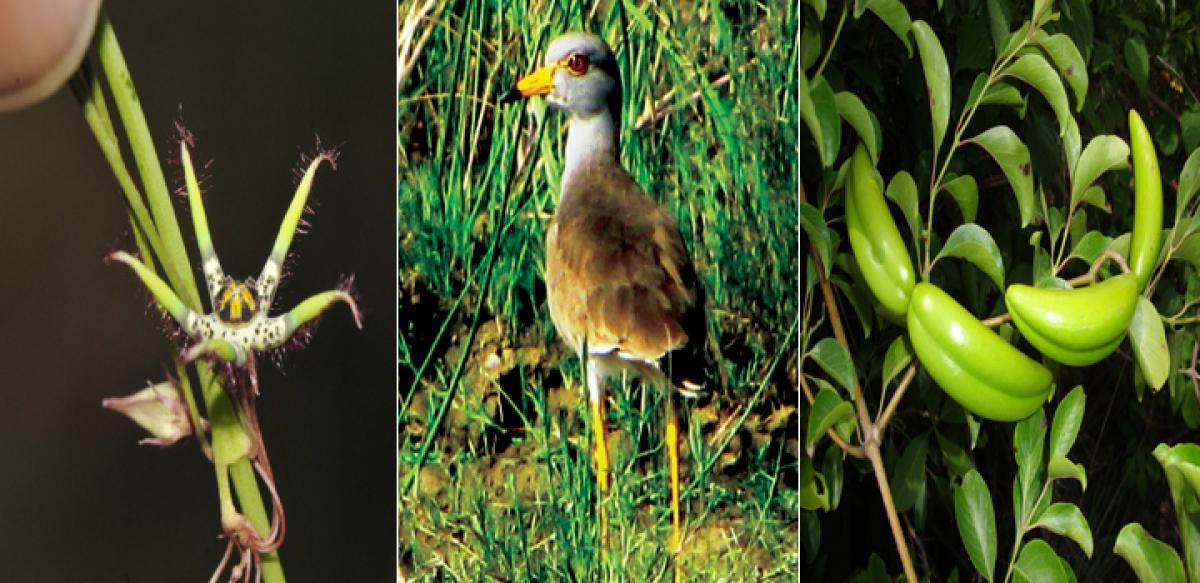Live
- Goa Aces clinch Indian Racing League title
- Study finds how hormone therapy can reshape the skeleton
- High-street fashion players looking at India for manufacturing: Report
- Shreyas Iyer to lead Mumbai as Prithvi Shaw returns for Syed Mushtaq Ali Trophy
- 'Failed to resolve crisis': NPP withdraws support from BJP govt in Manipur
- Chennai: Actress Kasturi Remanded in Custody Until 29th of This Month
- Aaqib Javed likely to become Pakistan's new white-ball head coach
- BJP panel to draft poll charge sheet against AAP govt in Delhi
- Allu Arjun Thanks Fans in Patna, Teases 'Pushpa 2' Release
- Japan to strengthen measures against illegal part-time jobs
Just In

The Telangana State Biodiversity Board and the Zoology Department of Osmania University have embarked on a five month programme to collect information on the plants and animals that are on the verge of extinction or which are critically endangered.
Hyderabad: The Telangana State Biodiversity Board and the Zoology Department of Osmania University have embarked on a five month programme to collect information on the plants and animals that are on the verge of extinction or which are critically endangered.
At present, the Telangana State Biodiversity Board has listed 120 species of plants and animals in the ‘Red List’ or critically endangered list that form a part of the 3,500 species district-wise distribution data. The project is intended to scan the 10 districts and come out with a comprehensive list of animals that face the threat of extinction.
Experts say that a field survey was carried out long ago. This project, which has been taken up now, is of immense importance as it will throw up lots of new data and it is expected that 30 more species that are on the verge of extinction will be identified.
The ‘Threatened Taxa (Name of project) of Telangana State Assessment project’ kicked off on September 1. According to Dr C Srinivasulu, Assistant Professor, Wildlife Biology and Taxonomy Laboratory, Department of Zoology, Osmania University, “The idea is to find out about the loss of habitat, movement of animals to hitherto unheard territories and to add new additions to the already existing list, so that preventive measures could be taken.”
Stressing on the importance of the project, he further added, “Not very long ago the Gaur was commonly found in Telangana State, so much so the Army has named a whole division and the military insignia is based on the bison. Today, it is only found in Eturunagaram wildlife sanctuary, Kawal Tiger Reserve and in Kinnerasani sanctuary.”
Citizen-science partnership
Taking a leaf out of similar projects in Australia and the USA, the Telangana State Biodiversity Board has decided to involve the common man in what is called a Citizen-Science partnership to be launched within a week. People interested in conservation of biodiversity and anyone interested in collecting information on plants, animals, birds and aquatic life could become a part of the project.
People, who do not know the scientific names of plants and animals, just need to take photos on their phones and share it online. The team at the Zoology Department would tabulate data. Dr Srinivasulu said, “Identification of research scholars from different universities, NGOs and people interested in wildlife is complete and anyone interested in the project is welcome. Web forms would be given to them to fill the data and we would be launching mobile Apps in the coming days.”
A mobile Apps for each group such as reptiles, plants, mammals, amphibians and fishes would be launched soon. There are several animals and plants that are endemic to the region, but are slowly fading away. Barefoot conservation biologists, who find these species in different locations or after a long gap, would give hope, say experts.
The Banded Krait (snake) was sighted 72 years ago in Narsampet in Warangal and about 10 years ago a dead specimen was found in Eturunagaram Wildlife Sanctuary. The wolf, tiger, vultures and snakes are critically endangered, leopard, sloth bear, monitor lizard, few species of fishes and few species of plants, such as the Ledebouria hyderabadenis, is cited only at Osmania University and Hussainsagar.
The five-months project is expected to table its report in January 2017.

© 2024 Hyderabad Media House Limited/The Hans India. All rights reserved. Powered by hocalwire.com







